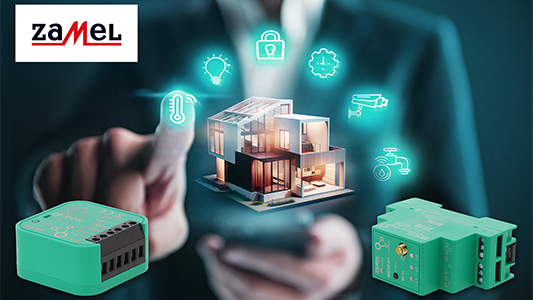Modern electrical installations need to be controllable by switches, as well as apps and automatic controllers. The SUPLA product family by Zamel is a perfect choice when it comes to making such complex, multipoint systems, even in places that were not originally designed for that.
Of course, the integrated SUPLA series can be successfully used in new installations. With products belonging to this family, you will build modern and flexible control systems for lighting, roller shutters, gate actuators etc. Still, good news for those who need to adapt older systems is that the SUPLA products use wireless Wi-Fi communication and are made in formats that allow the installations to be modernised with the use of the existing wiring.
Contrary to a common belief, the primary purpose of ‘smart home’ solutions is not to replace traditional switches with a remote control or a phone app. The main advantage of home automation is to expand it by adding certain functions. This means that the user still takes advantage of traditional switches (or their monostable versions), but gets an additional option to control the lighting with a phone (apps for Apple and Android devices), in the ‘cloud’, as well as to set a work schedule for particular lamps. This makes it possible, for example, to turn off a wall lamp in the hallway without getting out of bed, automate outdoor lighting or programme a number of illumination arrangements for different occasions, activated with a conveniently placed button (also a physical one). It is worth emphasising at this point that classic circuits allow a single lamp to be controlled by up to two switches, but in the case of digital control, the number of physical switches is, theoretically, unlimited. Moreover, in the case of the SUPLA series, the manufacturer has also provided control components for LEDs, as well as for gate or roller shutters actuators.
https://www.tme.com/in/en/katalog/?queryPhrase=SUPLA&productListOrderBy=1000028&productListOrderDir=DESC
This article covers topics such as:
- Remote and intelligent lighting control
- Controlling energy consumption in Smart Home systems
- The use of LEDs in adjustable lighting arrangements
- Colour-changing light and RGB strips
- Multipoint control of gate and roller shutters actuators
- Overcurrent protection, sensors and other accessories
Lighting controllers (from 1 to 7 channels)
In the case of the most typical single-phase lighting installations, the neutral and phase wires (and sometimes the protective conductor, too) are fed into each switch box, while the power lines for the bulbs are led out. This means that mains power is available at each light switch, and SUPLA flush-mounted lighting controllers take advantage of that. As they connect to the other modules in the installation via Wi-Fi, they do not require any additional wiring. The switch and the lines supplying the bulb socket (or any other source of light with power up to 750 W) are connected to the relevant terminals of the controller with the use of screw terminals. Mono- or bistable versions of the switches can be used. Once the device has been set up using the app, the circuit seems to be working in the same way as a classic solution would, but from now on, switching the light off or on can also be done from the app, as well as from an another independently powered controller.
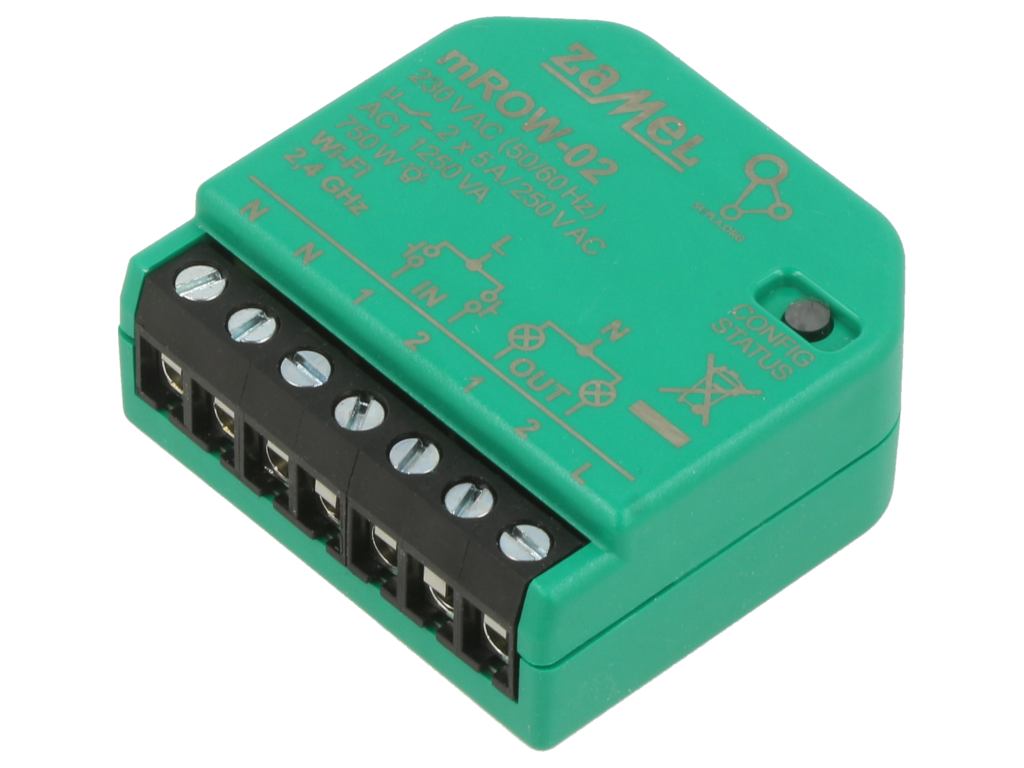
Flush-mounted
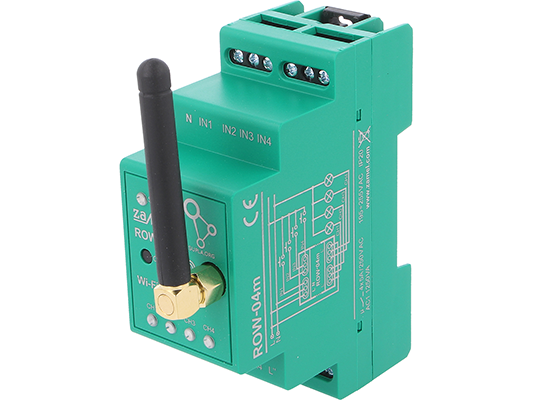
DIN rail-mounted
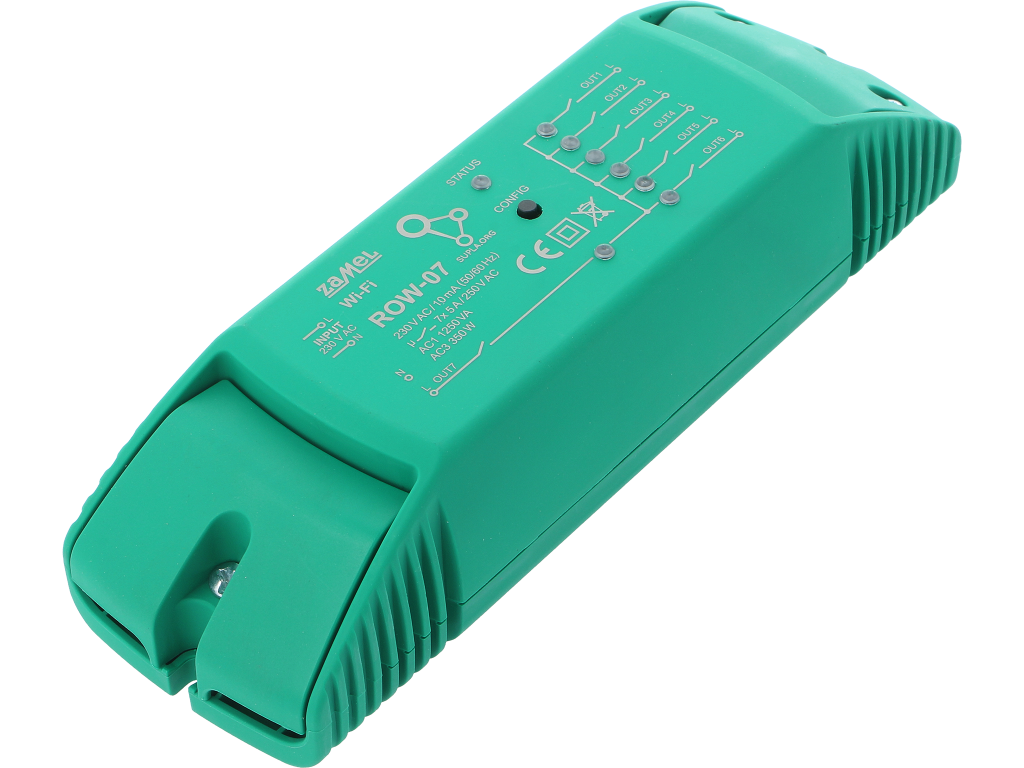
ROW-07
For building-in
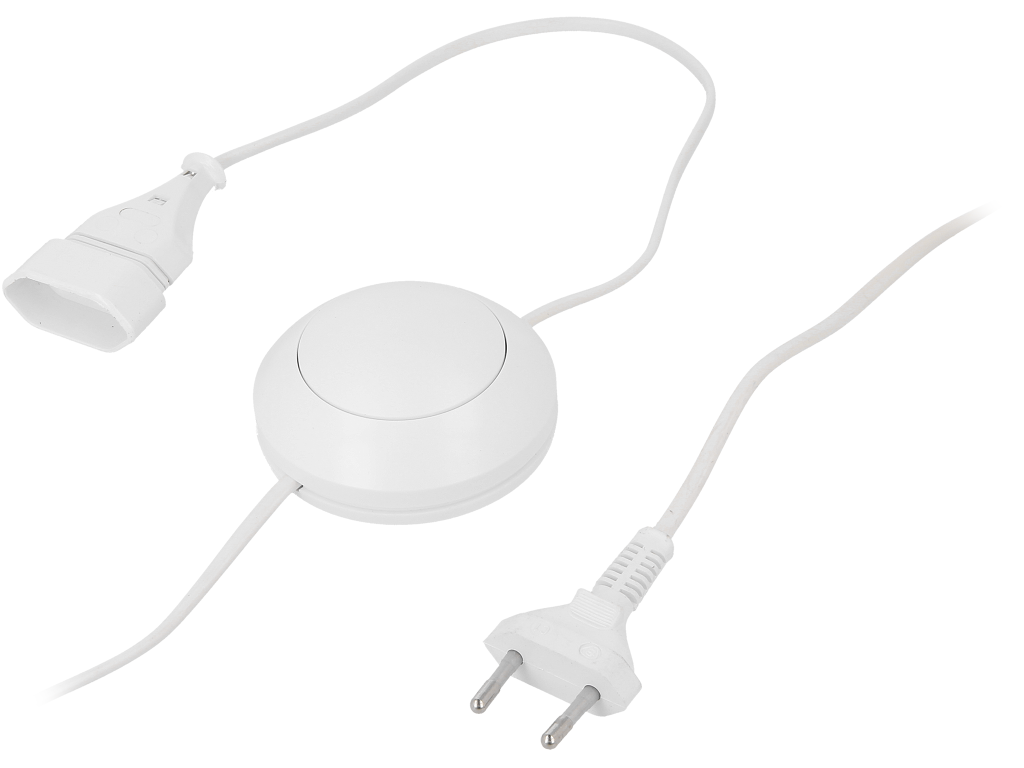
PNW-01
Floor-mounted
As you can see in the table above, SUPLA light controllers are available in several formats, although they all work in a similar way. The flush-mounted version described above best suits the needs of circuit modernisation in old buildings, especially those made of concrete, where making new grooves and openings is problematic and, in some cases, impossible (for structural reasons). In newly constructed buildings, as well as in the interiors where wall studs are used, the optimal solution will be to lay more complex wiring, with bundles leading to individual light sources. In such cases, DIN rail-mounted controllers can also be used – they have almost the same functionality, but a greater range, and they remain concealed in the distribution board, which simplifies maintenance. An interesting solution, as well as the simplest one to be adapted, is to use a floor-mounted controller made in the form of an extension cord with a switch. Closing the circuit between the plug and the socket can be done by using a footswitch, as well as remotely.
7-channelled controller
In the case of the ROW-07 controller a single module can control 7 receivers (it has no inputs), which will satisfy the needs of most interiors. It has been enclosed in a convenient body fixed with two screws, allowing it to be installed anywhere and in any enclosure – even an airtight one or, if required, outside of the building, allowing the user to control e.g. garden illumination.
4-input interface
In the SUPLA series, there is also a device with the opposite specifications, i.e. a 4-input interface, thanks to which 4 physical switches can be connected to the system, and the actions that they trigger can then be freely programmed. Importantly, this module is enclosed in a junction box, so it can be combined easily with multiple switches in a single frame, each of which can perform a specific function, not necessarily related to a particular light source, providing a very wide range of arrangement possibilities.
https://www.tme.com/in/en/katalog/?params=1752:1699923,1699926,1792076,1742648&queryPhrase=SUPLA&productListOrderDir=DESC&productListOrderBy=1000028
Energy monitors
One of the interesting features offered by smart building systems is precise control over energy consumption. This is particularly important in the times when we focus so much on the efficient use of energy, and especially in installations powered by renewable sources, such as photovoltaic panels. The current is monitored by directly installed transformers connected to DIN rail-mounted modules. Aggregated values can be accessed from the SUPLA app which provides information on aggregated energy consumption and thorough analysis in the form of a graph. The monitors are available in dual or triple input versions, as well as with an external antenna included in the set (if there is a significant distance between the distribution board and the central Wi-Fi point). Zamel also offers additional transformers as well as extensions, thanks to which the current flow can be measured in more circuits.

A single module with a transformer occupies one slot on the DIN rail.
https://www.tme.com/in/en/katalog/?params=1752:1788425_typ-modulu:monitor-energii-elektrycznej&queryPhrase=SUPLA&productListOrderBy=1000028&productListOrderDir=DESC
Lighting
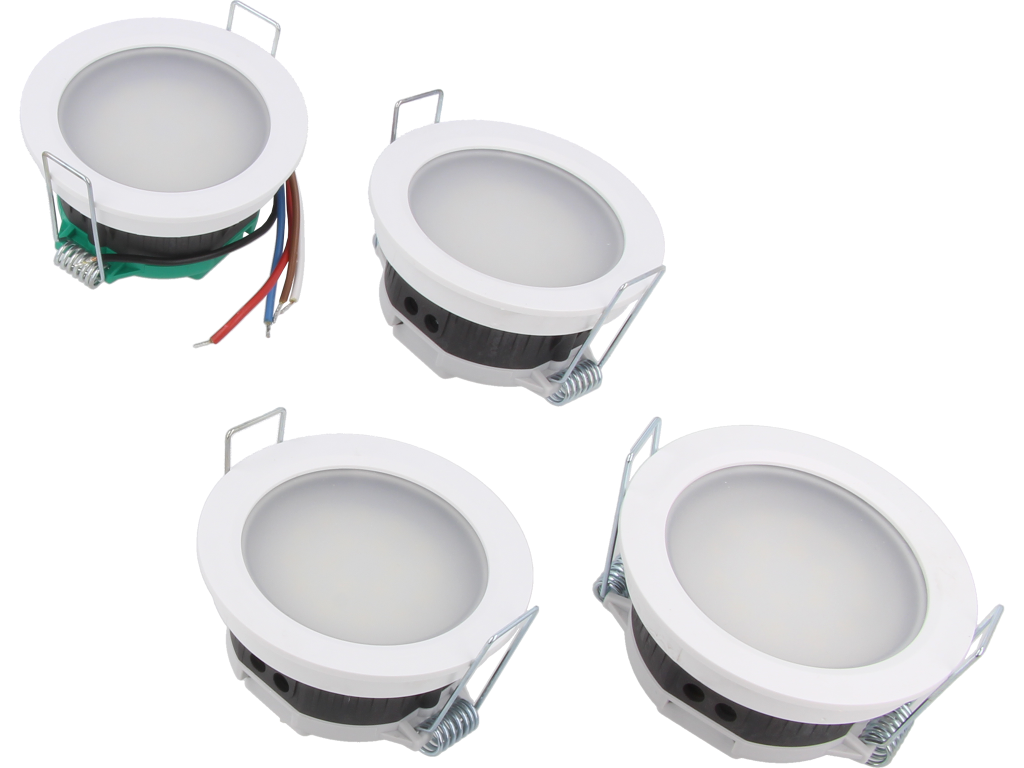
LED lamps with an integrated controller designed for mounting in a Ø75…80 mm opening.
In the field of lighting, Zamel offers ready-made sources of light with integrated controllers. These are LED lamps for installation in openings (in a drywall or a furniture board), designed to be powered by voltages from 12 V to 24 V DC. In the SUPLA app, each luminaire is identified as a light dimmer, since the user has control over the brightness of particular lamps. They reach a maximum intensity of 350 lm (while consuming approximately 3.5 W). Such units are available in sets of 4 pcs. Alternatively, customers can also purchase the SLW-02 standalone, flush-mounted LED controller (here, also in 12…24 V DC variants), which generates a PWM signal on two independent channels and can support, for example, popular LED strips with a maximum load capacity of up to 70 W for the 12 V variant and 140 W for the 24 V one.
Light dimmer
If the installation uses light sources that can be dimmed by pulse interruption of the phase power supply, such as classic light bulbs, Zamel offers DIW-01 modules. They support receivers with power of up to 150 W and are installed in a junction box – just like the controllers described above, they can be successfully used to modernise the existing lighting systems.
RGB controllers
Among popular solutions in the field of interior decoration and special effect illumination (e.g. shop windows), there are LED lamps and strips using RGB diodes. They can emit light in any chosen colour (mixing red, green and blue). To control such light sources, the SUPLA series offers the SLW-01 controller. Since the app provided by Zamel makes illumination programming available, individual operating modes can be linked to the specific colour setting, giving the user even greater control over the light effect.
https://www.tme.com/in/en/katalog/?params=1752:1539820,1598821,1598826,1972423&queryPhrase=SUPLA&productListOrderBy=1000028&productListOrderDir=DESC
Gate and shutters controllers
One of the greatest conveniences that an interior automation system allows to introduce is the remote operation of actuators. Most often, these will be actuators of roller shutters (security shutters or shades) and gates (entry or garage gates). The SUPLA family includes controllers that enable such control. Modules for this purpose are available in DIN-rail, flush-mounted and screw-on formats, controlling from 1 to 7 motors. Depending on the version, they control motors with voltages from 12 to 24 V DC (gate controllers) or 230 V AC (roller shutters). It should be noted that in the case of the former, the outputs are a pair of contacts that are shorted by a relay (up to 3 A), while in the case of the latter, the power supply line is connected to the receiver. Furthermore, the devices also feature inputs that can be configured as inputs of control signals fed from a switch or open/close sensors.

SRW-01
Motor controllers are also available in a flush-mounted version.
https://www.tme.com/in/en/katalog/?params=1752:1587350,1501143_typ-modulu:sterownik-bramy,sterownik-rolet&queryPhrase=SUPLA&productListOrderBy=1000028&productListOrderDir=DESC
Additional information
The SUPLA series also includes temperature and humidity sensors, thanks to which the interior conditions are monitored with an app. These are small devices powered with a USB cable (any charger can be used for this purpose). Like the other products presented here, they use Wi-Fi connectivity to transmit data, so they do not require additional hardware. Another important accessory developed by Zamel is the DIN rail-mounted fuse module which, having the width of one slot, accommodates three overcurrent (cylindrical) protectors, facilitating the creation of multi-line bundles that are necessary to build more complex lighting installations. Additionally, the manufacturer offers an external Wi-Fi antenna, thanks to which an optimal range can reached, even if the installation is made in a location that makes radio wave propagation more difficult, such as basement distribution boards, traditional buildings with thick walls etc.
Text prepared by Transfer Multisort Elektronik Sp. z o.o.
https://www.tme.com/in/en/news/library-articles/page/55970/home-automation-system-by-zamel/




